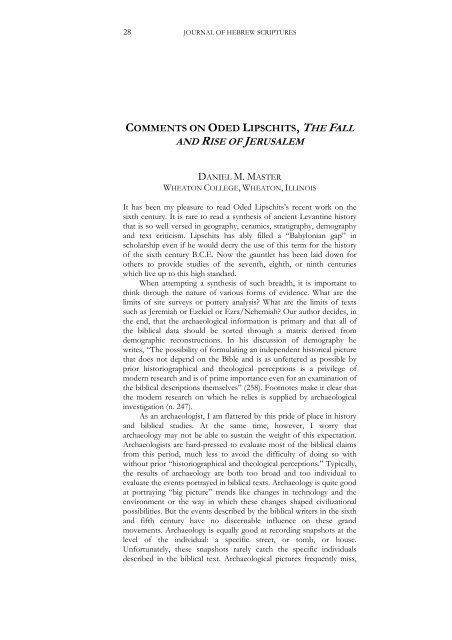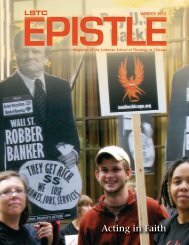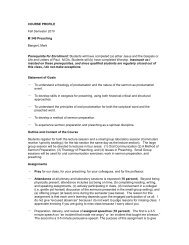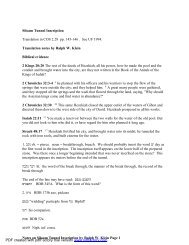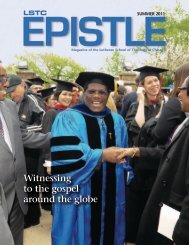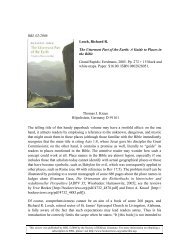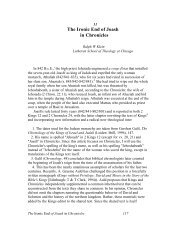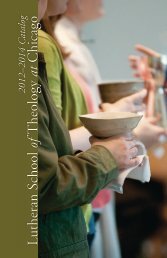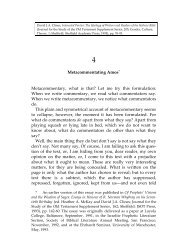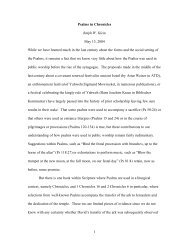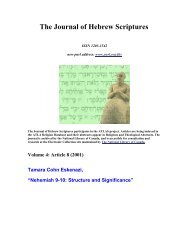Download this PDF file - University of Alberta - Journal Hosting
Download this PDF file - University of Alberta - Journal Hosting
Download this PDF file - University of Alberta - Journal Hosting
Create successful ePaper yourself
Turn your PDF publications into a flip-book with our unique Google optimized e-Paper software.
28JOURNAL OF HEBREW SCRIPTURESCOMMENTS ON ODED LIPSCHITS, THE FALLAND RISE OF JERUSALEMDA NIEL M. MASTERWHEATON COLLEGE, WHEATON, ILLINOISIt has been my pleasure to read Oded Lipschits’s recent work on thesixth century. It is rare to read a synthesis <strong>of</strong> ancient Levantine historythat is so well versed in geography, ceramics, stratigraphy, demographyand text criticism. Lipschits has ably filled a “Babylonian gap” inscholarship even if he would decry the use <strong>of</strong> <strong>this</strong> term for the history<strong>of</strong> the sixth century B.C.E. Now the gauntlet has been laid down forothers to provide studies <strong>of</strong> the seventh, eighth, or ninth centurieswhich live up to <strong>this</strong> high standard.When attempting a synthesis <strong>of</strong> such breadth, it is important tothink through the nature <strong>of</strong> various forms <strong>of</strong> evidence. What are thelimits <strong>of</strong> site surveys or pottery analysis? What are the limits <strong>of</strong> textssuch as Jeremiah or Ezekiel or Ezra/Nehemiah? Our author decides, inthe end, that the archaeological information is primary and that all <strong>of</strong>the biblical data should be sorted through a matrix derived fromdemographic reconstructions. In his discussion <strong>of</strong> demography hewrites, “The possibility <strong>of</strong> formulating an independent historical picturethat does not depend on the Bible and is as unfettered as possible byprior historiographical and theological perceptions is a privilege <strong>of</strong>modern research and is <strong>of</strong> prime importance even for an examination <strong>of</strong>the biblical descriptions themselves” (258). Footnotes make it clear thatthe modern research on which he relies is supplied by archaeologicalinvestigation (n. 247).As an archaeologist, I am flattered by <strong>this</strong> pride <strong>of</strong> place in historyand biblical studies. At the same time, however, I worry thatarchaeology may not be able to sustain the weight <strong>of</strong> <strong>this</strong> expectation.Archaeologists are hard-pressed to evaluate most <strong>of</strong> the biblical claimsfrom <strong>this</strong> period, much less to avoid the difficulty <strong>of</strong> doing so withwithout prior “historiographical and theological perceptions.” Typically,the results <strong>of</strong> archaeology are both too broad and too individual toevaluate the events portrayed in biblical texts. Archaeology is quite goodat portraying “big picture” trends like changes in technology and theenvironment or the way in which these changes shaped civilizationalpossibilities. But the events described by the biblical writers in the sixthand fifth century have no discernable influence on these grandmovements. Archaeology is equally good at recording snapshots at thelevel <strong>of</strong> the individual: a specific street, or tomb, or house.Unfortunately, these snapshots rarely catch the specific individualsdescribed in the biblical text. Archaeological pictures frequently miss,


